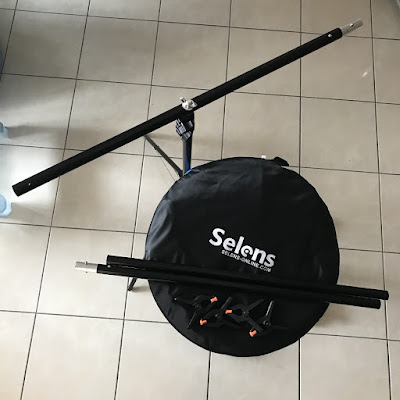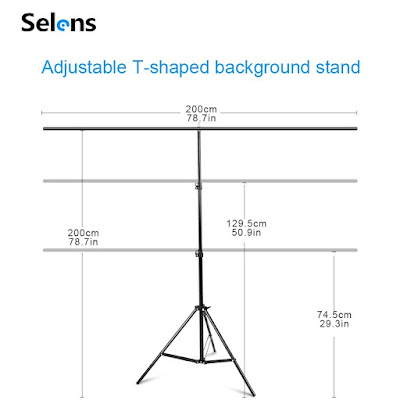It only took a year of sustained procrastinating but painting sessions have resumed again. Sarcasm aside, it feels good to finally work with paint again. While prepping and priming is an integral part of the hobby, those steps aren't as fulfilling creatively as laying colors on a miniature. At this early stage, the only paints being utilized are basecoats that function as foundation layers on which other hues will rest. Basecoats also serve to block off sections of the figurine into its appropriate colors.
 |
| 1/12 scale Girl's Rider figurine [work-in-progress: block painting basecoats] |
A mishmash of techniques and materials were at play when laying down the basecoat colors. Various sections of the primed figurine received different types of paint via disparate means of delivery. For example the flesh areas and t-shirt were airbrushed with lacquer paint and fine primer respectively while the hair, jeans, belt, boots, and gloves were hand-painted with acrylic paint. It's important to note that when working with both lacquer and acrylic paints: it's generally okay to paint acrylic on top of lacquer paints but NOT vice versa! So please be aware of at least this point.
 |
Basecoat paint and primer colors used so far in the block painting process
|
Block painting was carried out in phases starting with the upper-half of the figurine. First, the whites of the t-shirt was blocked off using an extremely fine surface primer i.e. the Mr.Hobby Mr.Finishing Surfacer 1500 White. In an ideal situation I would've preferred to use flat white lacquer paint instead of a primer. However, I didn't have any of the former on hand. Moreover experience told me it's time consuming to achieve smooth whites using acrylic. Hence the compromise. Luckily I had plenty of Gaia Color lacquer paints for the skin tone, which was airbrushed onto the face and arms/hands.
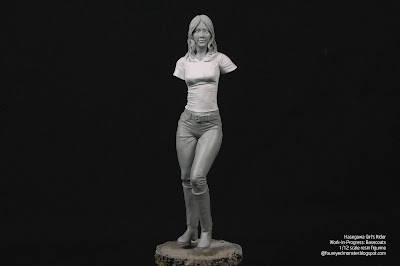 |
First basecoat layer to be applied onto the Girl's Rider figurine ...
|
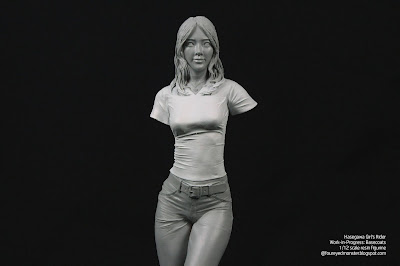 |
... was the whites of her t-shirt, using the Mr.Finishing Surfacer 1500 White.
|
 |
Second basecoat applied was the figurine's skin tones through the use of ...
|
 |
... an old (and no longer produced) Gaia Color flesh color formula ...
|
 |
... and this was applied onto the face, arms, and hands.
|
To complete the basecoat layers for the upper half of the figurine, her hair was basecoated by hand with acrylic paints comprising a mixture of two Vallejo Model Color hues namely German Camouflage Black Brown (70.822) and pure Black (70.950). This will serve as the foundation of black brownish hair that I intend to paint for the Hasegawa 1/12 scale Girl's Rider figurine.
 |
Third basecoat layer was placed on the hair comprised a mixture of ...
|
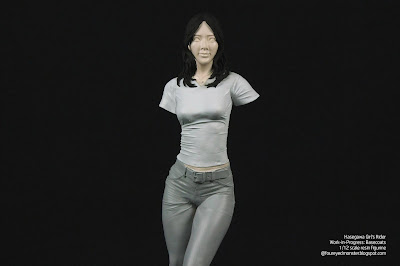 |
... Vallejo Model Colors German Camouflage Black Brown and pure Black.
|
With the basecoat layers completed for the upper-half, it was time to work on the darker hues of the lower half. This entailed the use of Vallejo's Dark Prussian Blue (70.899) for the jeans and pure Black (70.950) for accessories such as the belt, boots, and gloves. One unintended result of using the former was how glossy the dark blues looked. Whether this will be a significant factor when other blue hues are layered onto jeans, time will tell. Meanwhile, the blacks were flat which was fine by me.
 |
Fourth basecoat layer was for the dark blue denim jeans ...
|
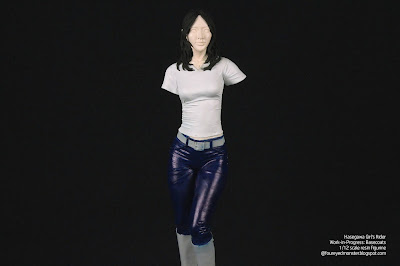 |
... which was done using Vallejo Model Color Dark Prussian Blue.
|
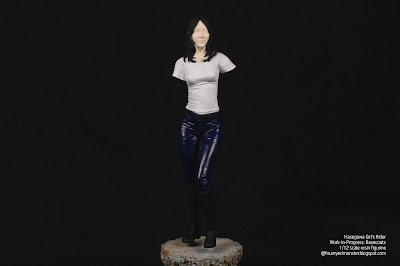 |
Final basecoat layer was pure Vallejo Black for the accessories ...
|
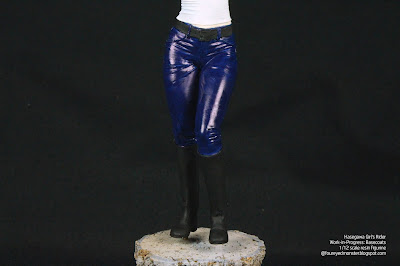 |
... such as the leather boots and belt as well as ...
|
 |
... the leather gloves, which are being held by the right hand.
|
Below is a series of photos showing the figurine fully basecoated with the appropriate colors. All pictures were taken against a bluish background in order to better contrast the dark areas.
 |
Each sequentially layered basecoat involved a fair bit of masking ...
|
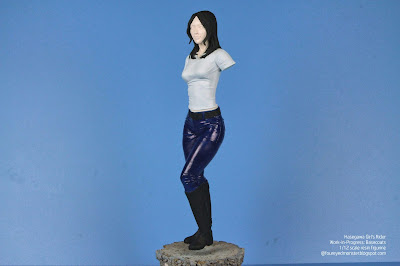 |
... actually it was only for the first two layers (i.e. white shirt and skin tones) ...
|
 |
... because these aforementioned layers involved airbrushing and the inherent ...
|
 |
... lack of control as to where any overspray may land on the figurine ...
|
 |
... This was unlike the later basecoat layers such as those on the ...
|
 |
... hair, belt, jeans, boots, and gloves ...
|
 |
... which were all painted by hand using regular paint brushes ...
|
 |
... Painting by hand removed the need for any masking because ...
|
 |
... I had much better control over where the new paint layers landed ...
|
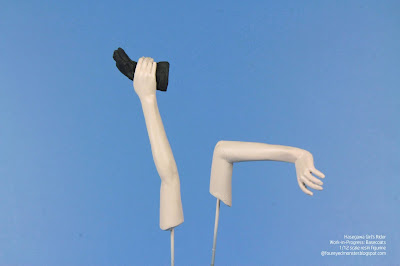 |
| .. thus easily preventing them from encroaching into the earlier layers. |
Going forward from here, the 'real' work will begin. Next up is the selection of paint colors to form the general color scheme of the entire piece. It's also the stage where I tend to overthink things the most. One color scheme after another is selected, discarded, re-selected, discarded again, put on hold, etc. You get the idea. Anyway, this time around I expect the selection process to go much faster seeing that it's only an East Asian female clad in white t-shirt, blue jeans, and black accessories. Easy peasy lemon squeezy, right? Right? Well, we'll see I guess. Until then, stay safe and be well!










.jpg)

